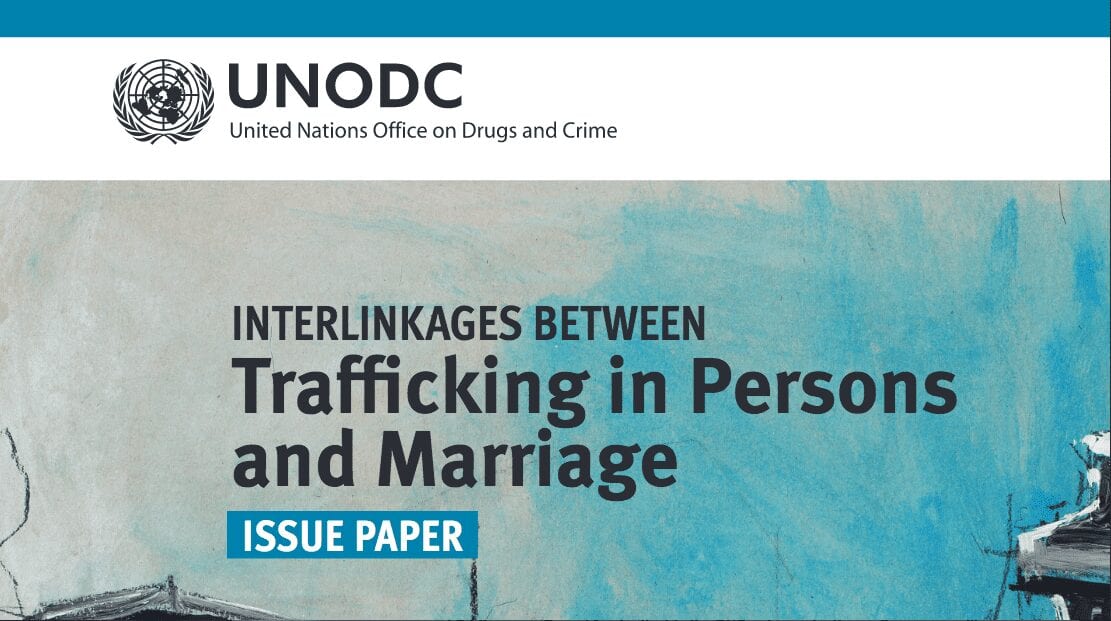
Trafficking in Persons and Marriage
The present issue paper explores the extent and circumstances under which different forms of marriage may fall within the scope of the Protocol to Prevent, Suppress and Punish Trafficking in Persons, Especially Women and Children, supplementing the United Nations Convention against Transnational Organized Crime. It combines research methodology and legal analysis to arrive at policy recommendations for countries to consider. The primary data collection was based on 75 expert interviews, involving almost 150 participants from nine countries.1 The interview tool was constructed in a deliberately broad manner to elicit conversations that would capture the reality of these phenomena, which manifested themselves differently in every country, and not to rush to conclusions about whether the conduct fell within the scope of the Trafficking in Persons Protocol.
Out of the almost 150 people who participated in the interviews, the great majority knew about or had direct experience of cases involving certain types of marriage and trafficking in persons. However, others had not made any connections between marriages and trafficking in persons in their line of work or had not encountered any relevant cases. In the cases presented during the interviews, it became apparent that trafficking in persons was most often linked to cases of marriage that showed signs of force, abuse or exploitation. Thus, these characteristics could be recognized as initial indicators for consideration of trafficking in persons. Experts, including from non-governmental organizations, who had interacted with victims noted that there was a low level of reporting of trafficking cases in general, but also of trafficking cases involving elements of marriage.
The countries included in the research have differing criminal provisions on trafficking in persons and criminal conduct within marriage. Some of the provisions within their legislation on trafficking in persons acknowledge some forms of marriage, such as child and forced marriage, as purposes of exploitation. Other countries address these forms of marriage as separate offences outside of the trafficking in persons framework. Thus, in the interviews, when experts were specifically asked to describe examples in which marriage and trafficking in persons intersected, some described constellations of forced, abusive and exploitative marriages, without necessarily qualifying them as trafficking in persons. Accordingly, this paper, in chapter 4, provides insight into different constellations of forced, abusive and exploitative marriages in order to capture the cases discussed, without prematurely classifying them as instances of trafficking in persons. The discussion is based on the case examples and experiences with such cases as described by the interviewed experts. Chapter 5 then provides a legal analysis of cases that would qualify as instances of trafficking in persons and that could be identified as such, the main points of which are also included in the section below on policy implications.
Read more here.
